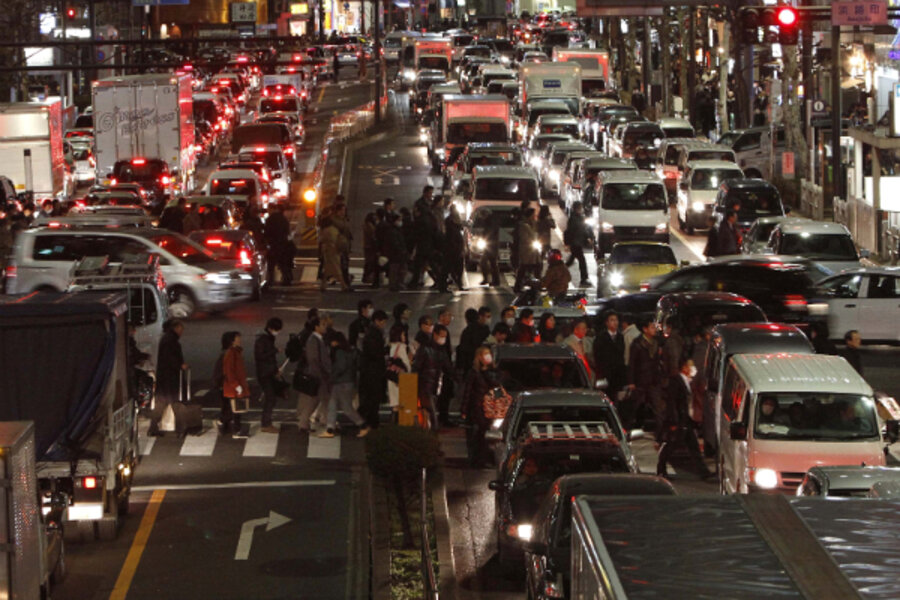Japan after the quake: What it's like to report on Japan's earthquake, tsunami
Loading...
| Tokyo
• A local, slice-of-life story from a Monitor correspondent.
The hardest work for a reporter covering the sort of natural disaster that struck Japan on Friday afternoon is not journalistic, it is logistic.
Stories of such drama write themselves. But getting to the scene of the catastrophe is another matter.
I managed to get the last seat on a Saturday plane from my home in Beijing to Nagoya, Japan several hundred miles south of the area hit by the tsunami, but arrived just in time to miss the last train to Tokyo.
RELATED: Japan earthquake: Eyewitness accounts capture Japan's tsunami after earthquake
That meant an overnight bus and a dawn train to a town an hour north of the capital, where I met up with a Japanese photographer friend who had rented a car and filled it with water, instant noodles, and a camping stove.
The first problem was that the main North-South highway had been closed while engineers checked it for damage. The minor roads we were forced to take were clogged with unaccustomed traffic and we repeatedly got stuck in tailbacks.
An even bigger problem was a lack of gas. Stations that still had supplies generally had no electricity to pump it, and those with power had drained their cisterns. Cars lined up for as long as a mile outside the rare stations still open and we could not afford to wait that long.
Nor could we afford to find ourselves in the worst hit area with no fuel. At one station, which had just closed, we begged and pleaded until they sold us 10 liters of the precious fluid. The manager also called another station nearby, which agreed to put 20 liters and a jerrycan aside for us.
It took us three hours of weaving around closed bridges and doubling back along flooded, buckled and cracked roads to get there, and when we finally did arrive we had had our fill of traffic jams. We took an unmarked road to the coastline, and cajoled our way past two roadblocks keeping vehicles off the tsunami-shattered road for their own safety. It turned out to be drivable, and after 12 hours, just after nightfall, we got where we were going.
Finally, I could start reporting.





